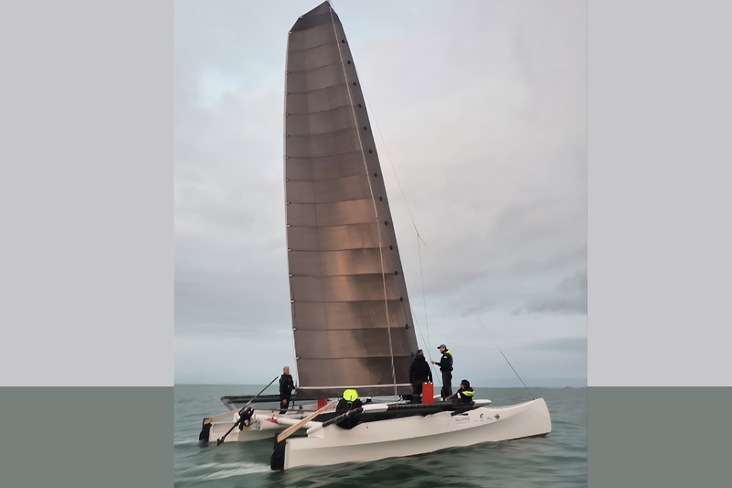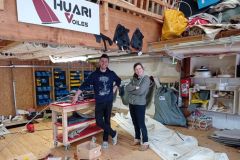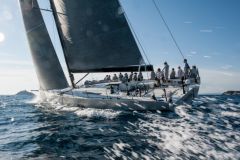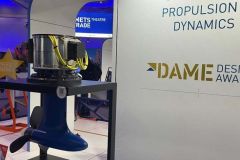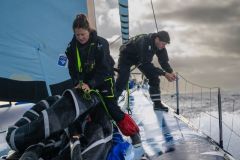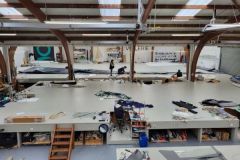A thick sail prototype that aims at simplicity
The ACCWing project (editor's note: Automatic Camber Control Wing) passed a crucial milestone on October 29, 2020. The partners in the adventure were able to test the first prototype of their flexible wing on the catamaran prepared at the Crazy Lobster yard in the port of Le Légué. Composed of a carbon mast, hairpin battens and a light sail cloth, this thick sail can be lowered and stowed. "It is a 60 m² wing with a lot of power and finesse. There is a real ease of trim and also of tacking. There is no need for a forward triangle," says Philippe Marcovich, founder of the composite resin manufacturer Sicomin and personal financier of the ACCWing project.
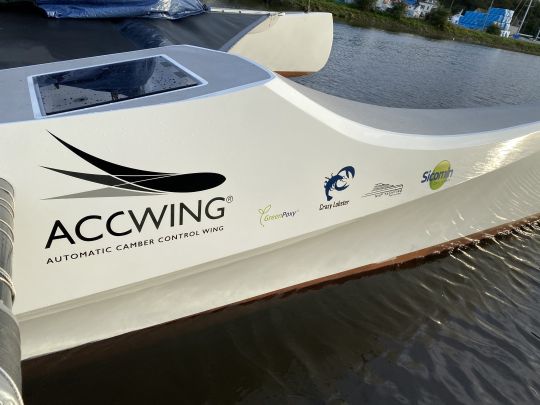
The culmination of a process
Hugues de Turckheim, the inventor of the new rig, known for his years at the head of the Tiga Team International windsurfing team where he had begun to explore the theme of thick sails, abounds in this search for simplicity. "In everything that seeks performance, as in aeronautics, we have long since abandoned the simple skin. In sailing, it's different because we're not always on the same side. The sails are also subject to deformation requirements, they are shaken, folded... The general trend has therefore been towards the development of single skins to the point of being extremely high performance. The thick sail was worked in parallel. In the America's Cup, they eliminated one problem, that of being able to lower the sail and therefore crumple and fold it. This is an extreme case where use eliminates the problems of cost and fragility. At the same time, some people wanted to keep the possibility of lowering and crumpling the sail. This took years. My first thick sail was 40 years ago with Tiga. There have been developments, but always complex and fragile. Today, we've managed to simplify it and limit the number of parts. There has been work on the geometry of the battens. The novelty is above all the simple and marine deformation adjustment system, with a lot of seamanship" enthuses the inventor.
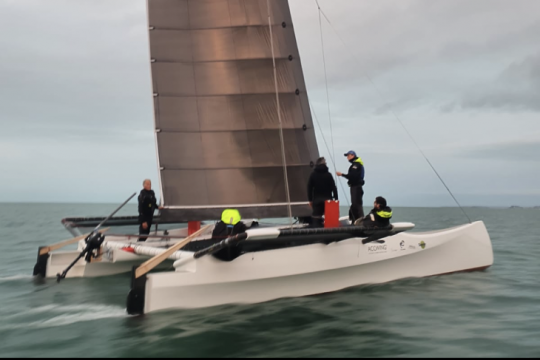
Create new rigging for all sailing boats
Philippe Marcovich makes no secret of his ambitions for the ACCWing. "Our catamaran, whose hulls were designed by Julian Spooner several years ago, is a demonstrator to prefigure the rigging of the future. The next step is an offshore version for 2021 on a multihull or monohull. One of the next steps is also the automation of the trimming of the wing. This can be suitable from a small 10-metre boat to a large yacht. There is no size limit, we are working towards the return of the sailing navy," he says.
A technical challenge for Crazy Lobster
For Tual Le Guillerm, founder of the Crazy Lobster shipyard, which manufactured the composite parts of the ACCWing and prepared the catamaran, this is a project for the future. "We were able to make a 17 metre mast with a non-constant section and many custom parts. We had to find solutions. They are strong personalities. It's a chance to take part in this type of project, which in my opinion is a winning project" concludes Tual Le Guillerm.

